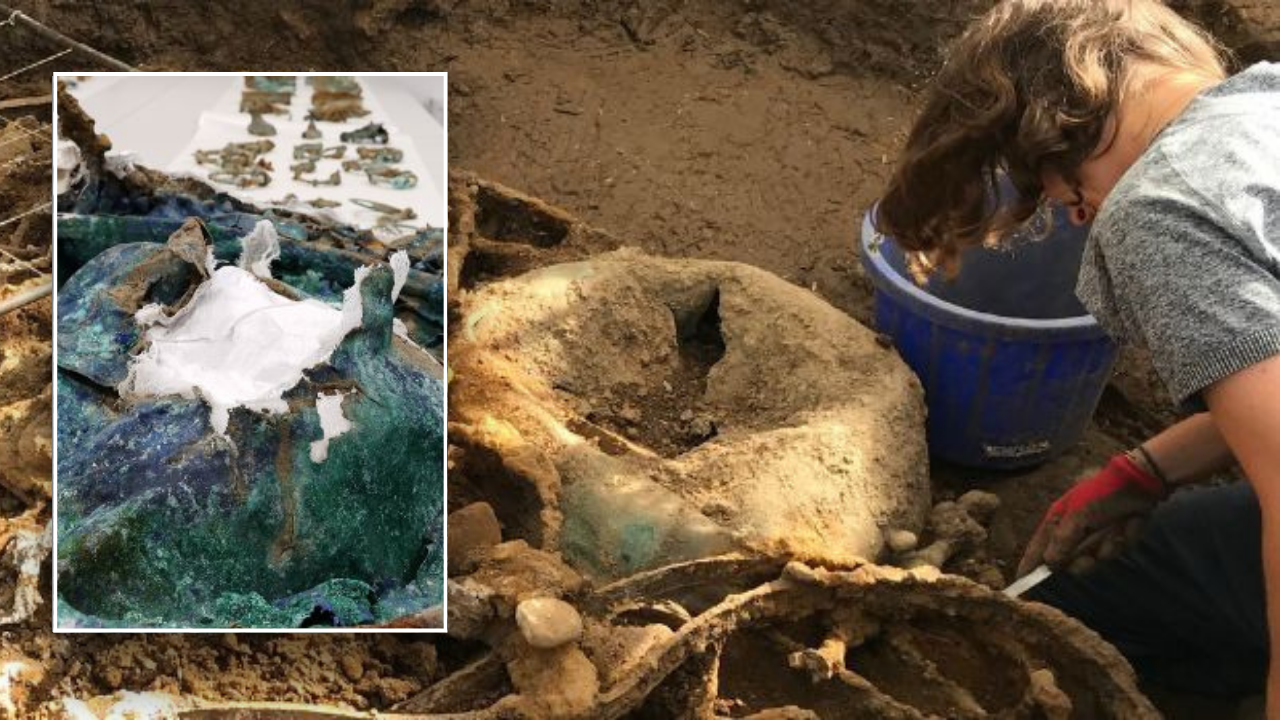It was a remarkable find.
The 800+ items date back to the first century, around the time of the Roman conquest of Britain under Emperor Claudius, and are almost certainly associated with a tribe called the Brigantes who controlled most of northern England. The site of the finds is just 3 miles from the ancient Brigantes royal capital of Stanwick and have a probable connection to Queen Cartimandua, one of the most powerful and controversial rulers in Britain at the time of the Roman invasion.
Cartimandua united various British tribes and pledged loyalty to the Romans as a client queen in exchange for wealth and power, betraying the Celtic chieftain Caratacus by insincerely offering him sanctuary but then handing him over to the Romans in chains. She also scandalously divorced her husband Venutius who then staged multiple revolts against her and ultimately toppled her from power despite Roman attempts to come to her aid.
Although detectorist Peter Heads only personally excavated part of the hoard (the bulk of it was recovered by archaeologists from Durham University), the entirety is considered as Heads’ find.
Under our ‘Treasure Act 1996’ the Secretary of State may designate any class of object which he considers to be of outstanding historical, archaeological or cultural importance as treasure, even if no precious metals are found. That was the case here, with the hoard being valued at £254,000.
The Yorkshire Museum is seeking an additional £30,000 by crowdfunding to supplement its available funds and purchase the hoard so that it stays together as a collection and doesn’t leave the country (and they’re already more than half-way to that target).




